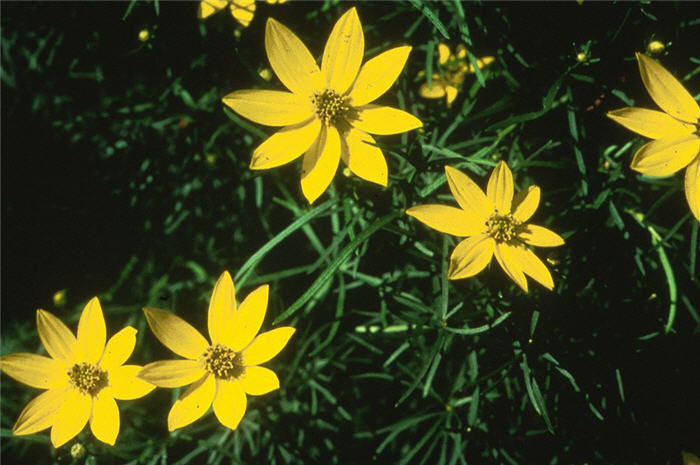| Botanical Name: Coreopsis verticillata | |
| Common Name: Threadleaf Coreopsis |

-
Anatomy
-
Culture
-
Design
Plant Type
Perennial
Height Range
1-3'
Flower Color
Yellow
Flower Season
Summer
Leaf Color
Dark Green
Bark Color
n/a
Fruit Color
n/a
Fruit Season
n/a
Sun
Full
Water
Low, Medium, Extra in Summer
Growth Rate
Moderate
Soil Type
Sandy, Clay, Loam
Soil Condition
Average, Rich, Poor, Well-drained, Dry
Soil pH
Neutral
Adverse Factors
n/a
Design Styles
English Cottage, Formal, Meadow, Mediterranean, Ranch
Accenting Features
Showy Flowers
Seasonal Interest
Summer
Location Uses
Entry, Perennial Border, Foundation, Parking Strip, Patio
Special Uses
Container, Cut Flowers, Mass Planting, Naturalizing, Small Spaces
Attracts Wildlife
n/a
Information by: Stephanie Duer
Photographer: Linda Engstrom
Photographer: Linda Engstrom
-
Description
-
Notes
Threadleaf coreopsis are a dainty but tough perennial, with bright green, needle-like leaves that form dense rounded mounds of foliage about 12 to 18 inches tall and wide (or wider). Flowers are pale yellow to golden, depending on the variety, and appear in profusion just above the foliage. Blooms from late spring well into summer and sometimes to frost. Use anywhere a cheery yellow flower would be welcomed; it has a tidy appearance that lends itself to cottage, commercial, or formal landscapes.
Grow in well-drained, slightly loamy to sandy-loam soils in full sun. Plants tolerate drier conditions than do the grandifloras. This coreopsis doesn't require deadheading to maintain bloom. however, during the peak of the summer heat, flowering may slow. shearing aback the plants a bit will encourage new foliage and usually another good bloom. Otherwise, it may bloom until frost, though the flowering will be less profuse. In optimum growing conditions, plants will spread in the garden over time by stolons to form an attractive ground cover, but spread is easy to check.